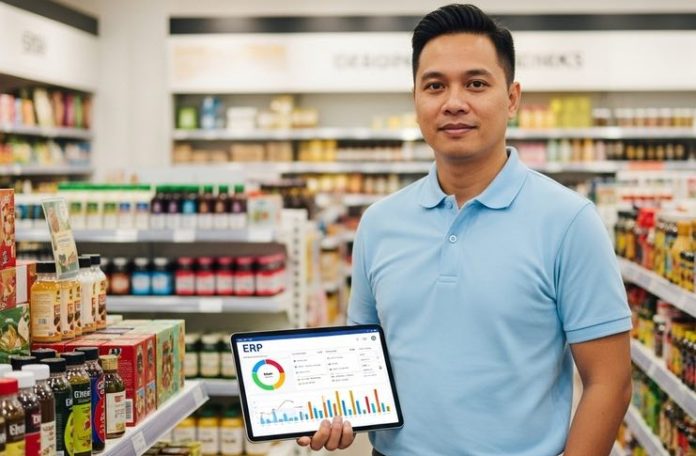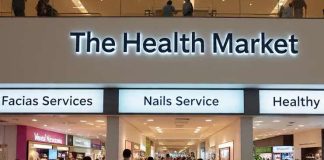
For many businesses, more sales is always welcome. Unfortunately, simply selling more is rarely enough to guarantee growth over the long term. For that to happen, every part of your operation must be able to keep up, and that can be a lot harder than it sounds. Between unpredictable market shifts, global trade challenges, and fast-rising customer expectations, succeeding in Philippine retail will demand so much more than just grit and product knowledge. As part of our business tips, we’ll explore the top things every retail business should invest in to be growth-ready at any time.
To put it simply, if your systems aren’t built to support growth, not even the best team in the world can help you. Without a solid system to support growth, they will only get burnt out as your competitors take the lead—something that is especially common in fast-paced retail.
Whether you’re managing one store or planning to expand to multiple locations, keeping your eye on the bigger picture and emphasizing sustainable, scalable growth over quick wins is a tried and proven approach. Be prepared to invest in these areas when you’re ready to bring your retail business to the next level.
1. A Scalable ERP Solution
Before you invest in anything else, you’ll want to upgrade your operational backbone. An enterprise resource planning (ERP) system like SAP Business One brings all your business processes into a single platform, allowing you to manage inventory, sales, finance, customer management, and everything else all in one place.
Aside from avoiding platform jumping, this kind of integration provides you with a comprehensive view of your operations, thus enabling you and your management team to quickly spot new opportunities. Most importantly, it puts all your data in one place, laying the groundwork for future automation so that your systems can scale as fast as you need them to.
2. Point-of-Sale (POS) Systems That Sync with Your Back Office
Your cash registers should do more than process payments. To help your business grow, they should also connect directly to your inventory, accounting system, and customer database. Look for POS solutions that integrate with your ERP to streamline reconciliation between these systems and save your business hundreds of hours each month on manual data entry.
3. Centralized Inventory and Order Management
Disorganized inventory is one of the biggest threats to retail growth, often resulting in sustained losses through spoilage, pilferage, and increased storage expenses. ERPs like the above-mentioned SAP Business One let you manage stock across multiple stores or warehouses with real-time tracking, even allowing for automated restocking when specific items reach certain thresholds. This helps prevent stockouts that negatively impact customer experiences while also avoiding runaway warehousing costs.
4. Data-Driven Sales and Customer Insights
The ability to forecast demand, track top-performing products, and personalize customer experiences keeps you from putting resources in areas that won’t provide solid returns. An ERP can also help in this aspect by allowing you to collect and visualize data from multiple channels, thus allowing you to spot trends and adjust your strategies. Integrating other systems like a customer experience platform can also help you hone in on more specific customer pain points as they move through your stores and experience your service.
Watch this video to learn more:
5. Mobile-Accessible Business Tools
Even if you have physical stores, not all retail activities need to happen on-site. Having systems that support remote office work can help you save on office space costs, without you having to give up any visibility or control. If you plan on running a lean, dispersed operation, your tools must enable teams to track sales, manage orders, and approve purchases even while off-site.
6. Up-to-Date Cybersecurity and Data Protection
As you move more of your operation online, you’ll need to invest in better cybersecurity, especially if you plan on letting more of your team work remotely. Secure ERPs and cloud platforms are a good start, but you may also want to explore solutions that are specifically designed for retailers.
Watch this video to learn more:
7. Staff Upskilling Programs
While they can take a lot of manual labor out of the equation, no platform can replace the value of a well-trained team. Any platform investment must also come with a plan for upskilling team members so that they can become proficient in your new technology. This not only ensures a faster ROI, but also allows more of your staff to continue growing with your company.
Watch this video to learn more:
8. Scalable Financial Infrastructure
If your business still pays suppliers and employees with bills tucked into envelopes, your payroll and finances may need a revamp before you can start expanding sustainably. A fully digital accounting and banking setup that integrates with your ERP and other systems will boost accuracy and keep your accountants from being overwhelmed as transaction volumes increase. Solutions developed for Philippine businesses can even generate financial documents and compliance reports, shielding your operations from costly errors and regulatory risks.
Retail Growth Is a Choice. Be Ready to Seize It
Investing in smarter, more scalable tools and systems removes a massive amount of friction in your backend processes, helping you do much more with far fewer employees. As the cost of labor continues to increase, you will need to look into these tools, not as a way to replace people but as a way to make them better contributors to your retail business’s next phase of growth. With the right tools, your retail business will not only weather market changes but also become fully empowered to grab the opportunities that those changes will bring.
Danella Yaptinchay is the managing director of Full Suite, a service company providing back end support to small businesses. She is a cofounder of Co.lab, a coworking space, and of the media company Homegrown.ph. In constant pursuit of balance and self-development, she tries to apply the practices of yoga to her daily life.




